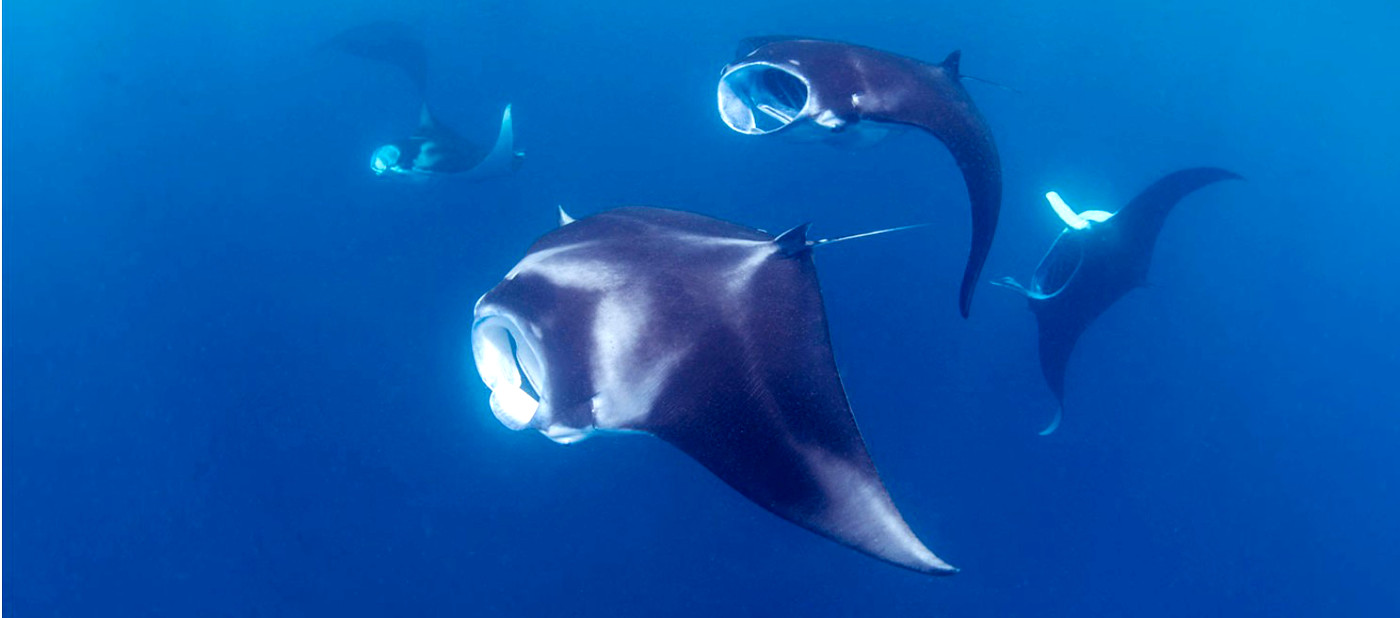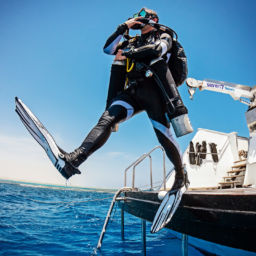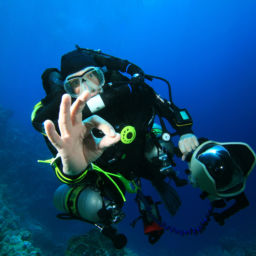A quality wetsuit is worth its weight in gold. It keeps you warm and toasty underwater and allows you to do dives that would be impossible without thermal protection. Plus, having your own suit means you avoid all the pitfalls of rental wetsuits: poor fit, possible urine (don’t judge), arms and legs too long, and more. But before you make an impulse purchase, be sure to choose the right suit for the type of diving you’ll be doing. Here, we go over what you need to know before buying your first scuba diving wetsuit.
Fit is everything
Wetsuits, more than any other piece of scuba equipment, must fit you well. One way a properly fitted wetsuit keeps you warm is by trapping a thin layer of water between your body and the suit. Your body then heats up this water to help keep you cozy.
If a wetsuit fits poorly, water can flow in and out of the suit’s neck, wrist, and ankle seals as you dive, and the suit can’t perform the full breadth of its thermal functions.
Avoid this situation by checking the fit of a wetsuit before purchase. Or, if you’re shopping online, make sure the retailer accepts returns.
Here are a few hints when it comes to checking a wetsuit’s fit:
- The neck seal should be snug but not too tight.
- Wrist and ankle seals should lie flat against your skin and not pucker or gape as you move your limbs around.
- The suit should be tight — that’s how it keeps you warm, after all. But if it’s so tight that you’re unable to stretch both your arms above your head and press your hands together, you need to go up a size.
- The wetsuit’s crotch should be close to your own, not stuck in limbo somewhere between your nether regions and your knees.
- Make sure the suit’s arms and legs reach your wrists and ankles. If they don’t, consider going up a size or ordering the suit’s tall version.
- The wetsuit should conform to your body everywhere. If it pulls away from your body along your spine, it’s probably too small. This is more of an issue for women and it’s often the reason why rear-zip wetsuits rip at the zip’s bottom.
Choose the right level of thermal protection
It’s no good buying a state-of-the-art 7 mm double-layer suit if you intend to dive the tropics and never venture into cooler climes. Likewise, a 3 mm shorty wetsuit won’t serve you well in Northern European waters, even in the summer.
Buy the right suit for the type of diving you’re doing, and you’ll stay comfortable underwater and on the shore. Wetsuits come in fairly standard thickness ratings, measured in millimeters. The thicker the suit, the warmer it is. Here’s a guide to water temperatures and the suits best suited to the climate:
75 to 85 F (23 to 29 C): 1 to 3 mm neoprene wetsuits or, at the warmer end of the scale, Lycra skinsuits that provide protection from any marine stingers floating past you. If stingy stuff isn’t an issue, feel free to wear a short, thin wetsuit or a rash vest and board shorts.
65 to 75 F (18 to 23 C): In moderate waters, choose a 5 mm full suit. To add a little extra warmth, a hood or a chicken vest (yes you read that right) can do wonders. Chicken vests add an extra layer to your torso and are generally 1 to 3 mm thick.
50 to 65 F (10 to 18 C): Choose a 7-mm full suit and add extra neoprene layers if water temperatures are at the cool end of this bracket.
40 to 50 F (4 to 10 C): At the warmer end of the scale, a 7-mm full suit or double suit might suffice for a short dive, but when it gets this cold, you really need a drysuit.
Weights and buoyancy
Neoprene wetsuits contain tiny bubbles of air in the suit’s material. This helps keep you warm, but it also makes you buoyant. As a result, you need more weight if you dive in a thicker suit than in a thinner suit. So, if you’re changing from a rental 5 mm to your own 7 mm, take along a few extra pounds.
New wetsuits are extra buoyant. As divers use them and they compress, they’ll lose a bit of this buoyancy. So, don’t be surprised if your brand-new suit needs more weight than you anticipated.
As you’ll remember from your training, gas compresses with depth. As you go deeper, your wetsuit will get thinner and offer less thermal protection. And, in some dive locations, thermoclines mean the water will be one temperature nearer the surface and experience much as a 10-degree drop once you pass a certain depth. Make sure your suit can keep you warm at depth.
Seals and zips
Wetsuits are like any product — the more expensive they are, the better they should perform. Seals and zips are both factors that affect a suit’s quality and its price.
Where possible, choose wetsuits with solid, sturdy zips — YKK brand zips are always reliable. Cheap, flimsy plastic lasts about as long as you’d expect.
While most wetsuits once had back zips as a rule, front zipping suits are becoming more common. Zipper placement is largely a matter of choice. Some divers don’t mind hauling rear zips up with the dedicated tag; other divers prefer an easy to manage front zip.
Some divers are using zipper-less suits too. These are often more expensive or have been designed with freediving in mind. That said, they’re perfectly fine for scuba.
Wetsuits are often marketed as having “sealed” seams. This means that all the seams have been glued together in addition to the standard sewing in place. The result is less water seeping in through the seams, which, in turn, keeps you warmer.
Brand matters
Most dive-equipment manufacturers make wetsuits. The brand doesn’t really matter; quality and fit are far more important. But choosing one of the well-known producers should guarantee a quality product.
The following brands all make popular scuba diving wetsuits:
- Fourth Element
- O’Neill
- Aqualung
- Bare
- Cressi
- Scubapro
- Hollis
- Mares
You can also look outside scuba diving to find great wetsuits. O’Neill, for example, is perhaps better known as a surf brand. Likewise, Billabong, Rip Curl and Quicksilver all make wetsuits that do double duty on a board and underwater.
We hope this guide to choosing your first scuba wetsuit was helpful. Buying a scuba diving wetsuit is a great first step to enhancing every dive you undertake







